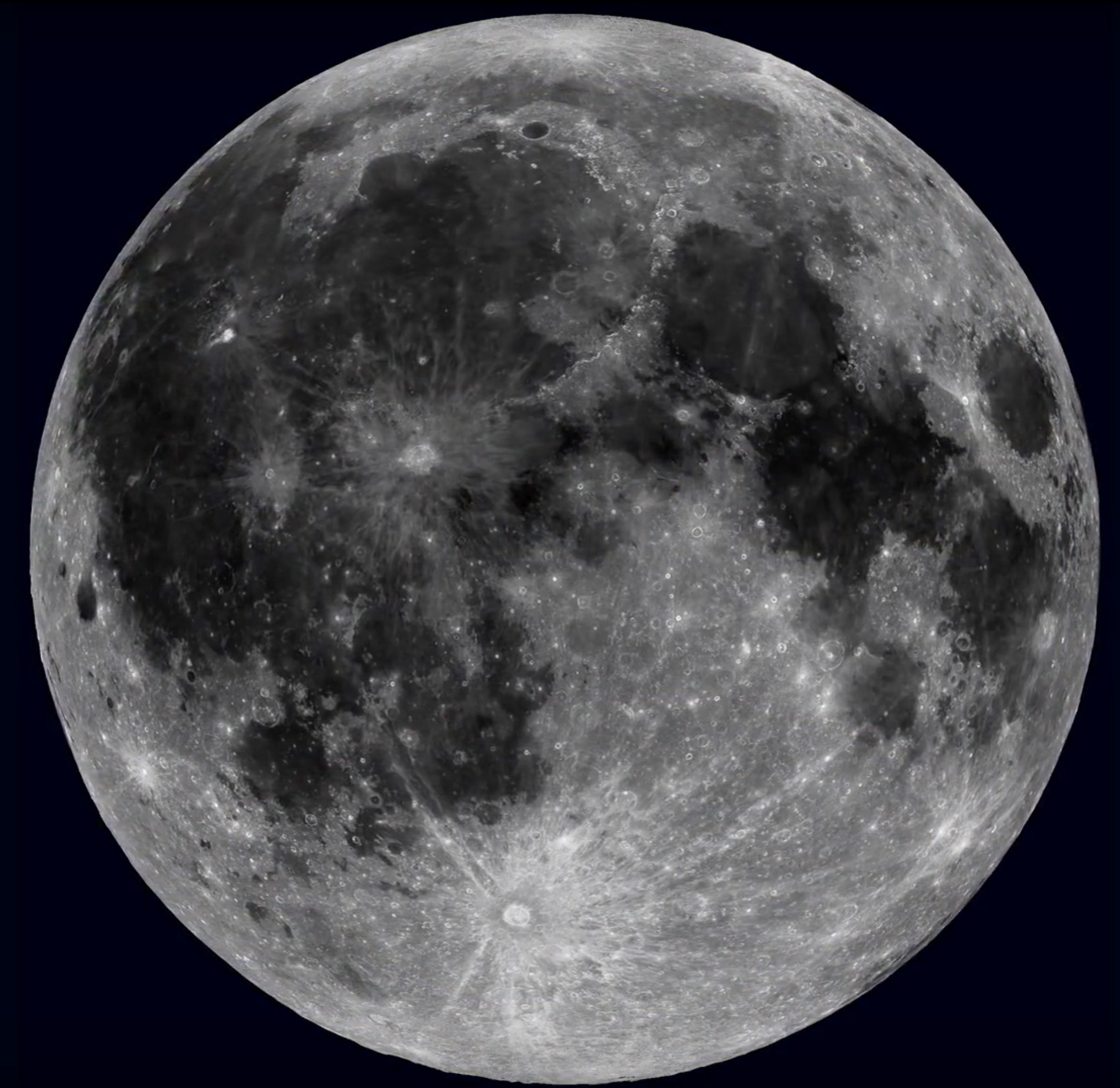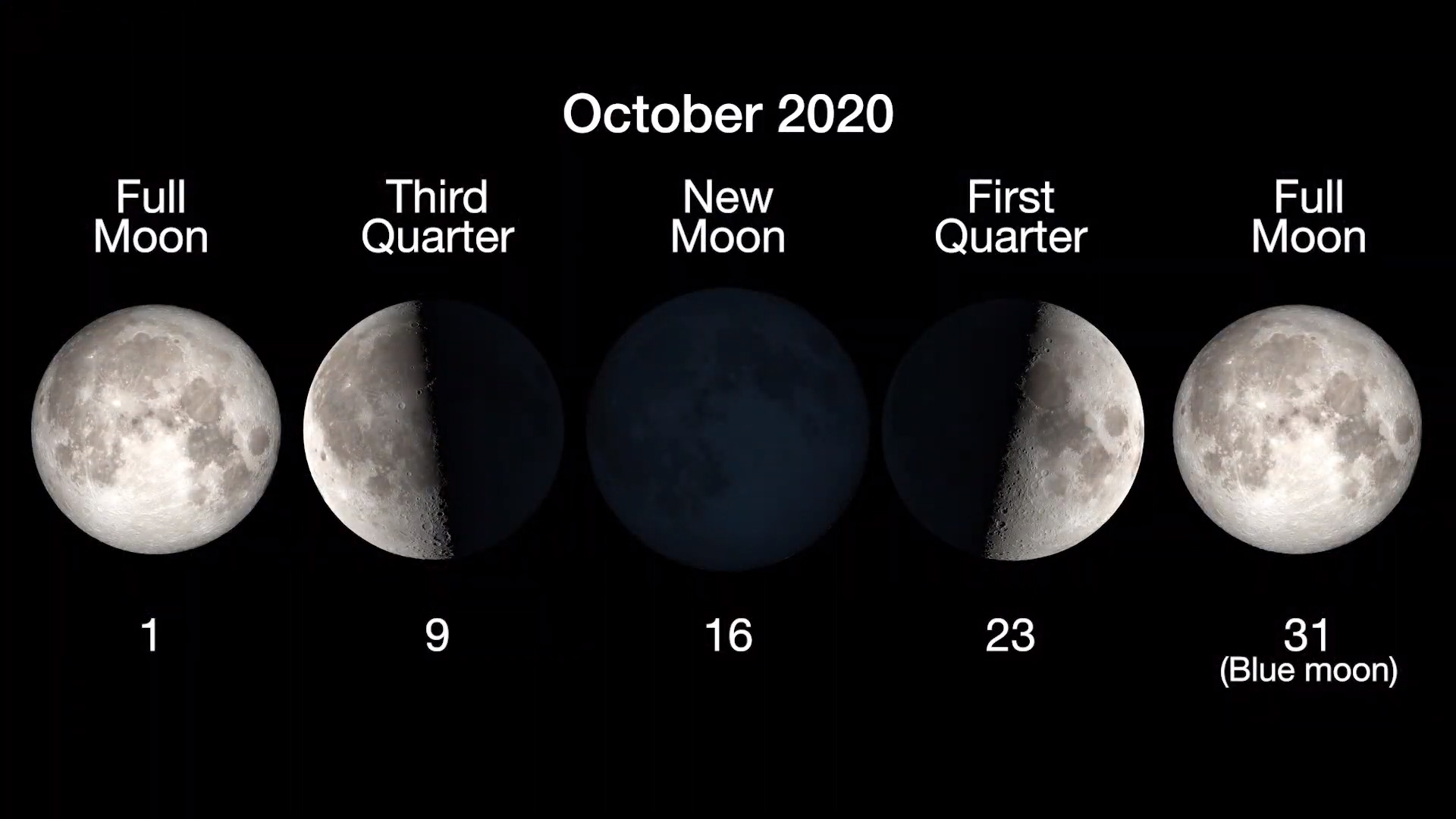How to watch rare Halloween 'blue moon' tonight
The spooky season comes with some rare coincidences in 2020.

If anyone is trying to wake some dark spirits, tonight's the night.
Halloween is here (Oct. 31), along with a full "blue moon" — meaning the second full moon in a single month. All Hallow's Eve full moons are rare enough, occurring about once every 19 years. But this is the first time since 1944 that trick-or-treating has lined up with a blue moon, according to the Farmer's Almanac.
The spooky lightshow in the sky should begin soon enough for even the earliest candy-hunters. Moonrise should happen between 5:50 and 6:40 p.m. local time across most of the United States, with some variance between different latitudes and positions within time zones. Right after moonrise, the moon should be visible at the horizon. As the night wears on, it will rise higher and shine brighter — illuminating any tricksters out egging houses (no, don't do that!).
Related: Gallery: The fantastic full moon
Much of the U.S. should have clear enough night skies to spot the blue moon while out trick-or-treating, though clouds are in the forecast for New Jersey, New York and part of New England, as well as the Pacific Northwest and central Minnesota, according to the National Weather Service.
The first full moon this October, which rose on the first of the month, also had a special name: the "Harvest Moon," referring to the first full moon after the September equinox. (The second full moon of autumn, this blue moon, sometimes takes the name "Beaver Moon," according to NASA.)
The blue moon (or Beaver Moon) occurs thanks to a routine coincidence of the Gregorian calendar months and the regular moon phases. It's a term that seems to have originated in the 1940s, according to Sky and Telescope.
Get the world’s most fascinating discoveries delivered straight to your inbox.

There are some special things going on with the moon right now though.
For one thing, it's at the farthest point in its orbit from Earth, about 31,000 miles (50,000 kilometers) more distant than its 239,000 mile (385,000 km) average. That makes this full blue moon also a "Micro Moon," though it should look just barely smaller than a "Super Moon" (that's Luna at its closest to Earth in its orbit).
More spectacularly, NASA researchers confirmed this month the presence of expansive deposits of frozen water on the moon. Some of it is sandwiched between grains of moon dust. But more of it may exist as vast frozen lakes, hidden in the darkest parts of deep craters, as Chelsea Gohd reported for Live Science sister site Space.com. And just a few months ago, researchers showed that tunnels likely exist under the lunar surface, big enough to house whole cities.
One final thing to look for in the sky Halloween night sky: Mars. The Red Planet is at its closest to Earth right now, even as humans reach out ever more intently with probes and plans for human missions toward its surface. Right now, no human being has ever been up there. But some Halloween sooner or later, there might be visitors playing dress-up on (or under) the Martian crust.
Originally published on Live Science.



